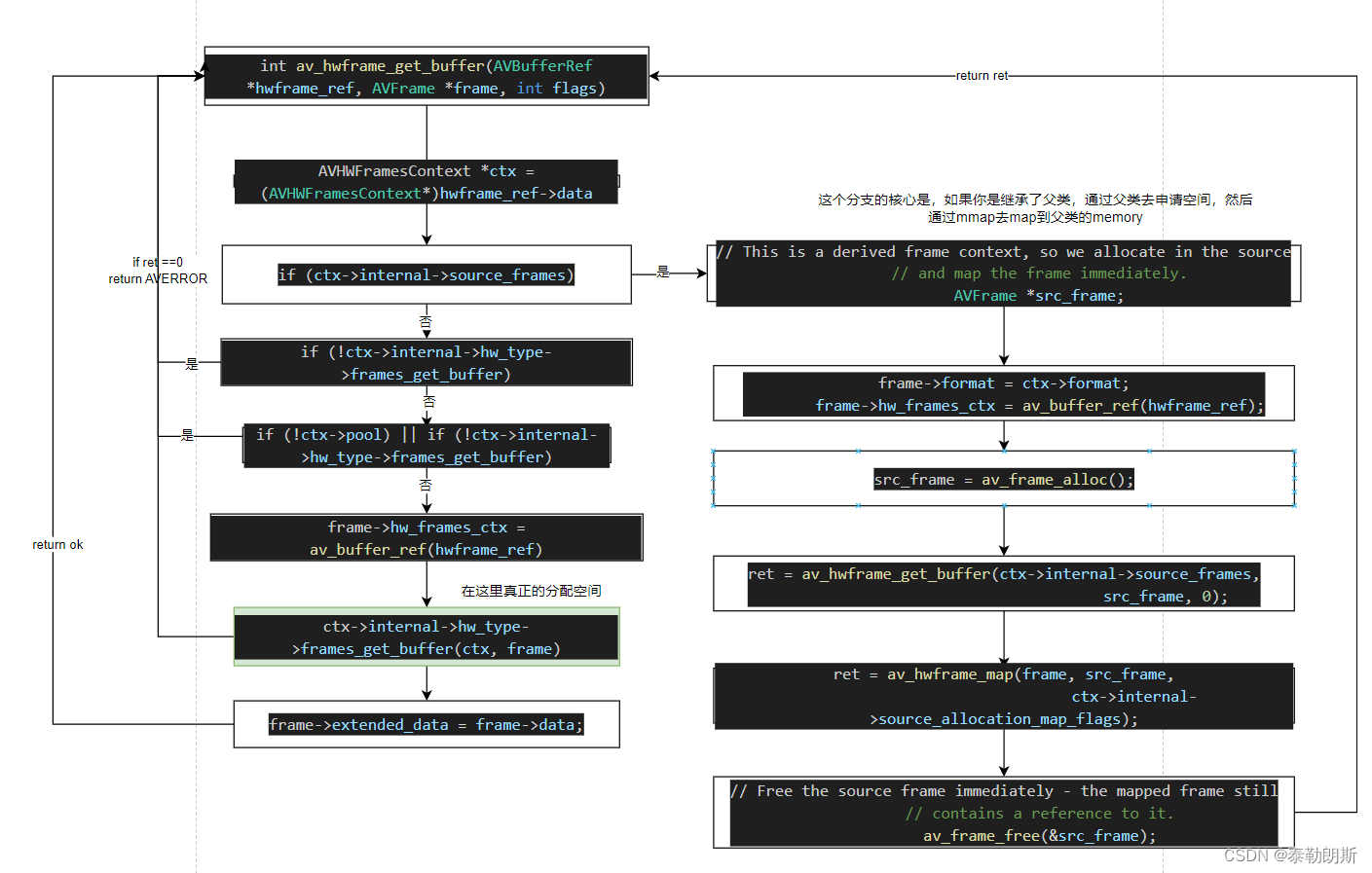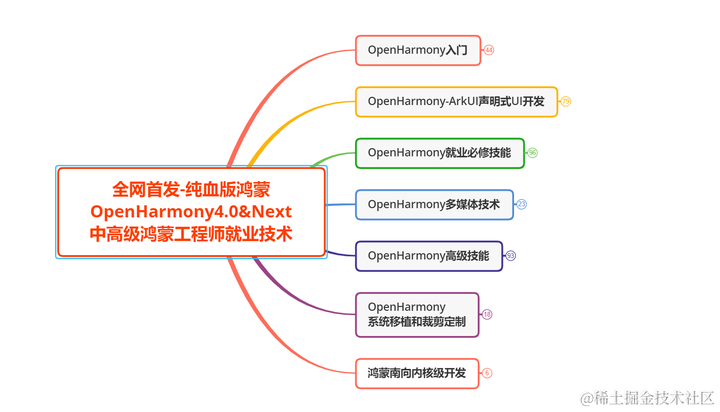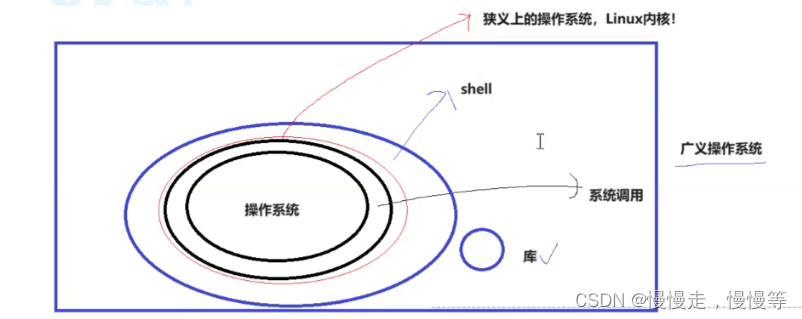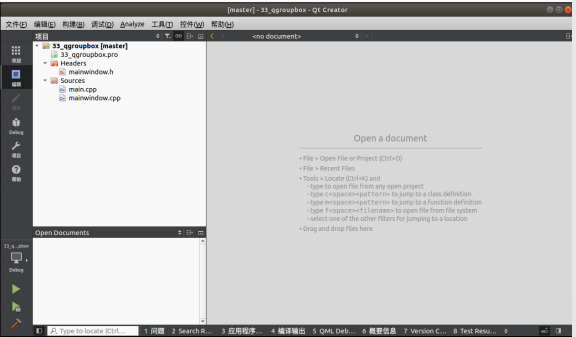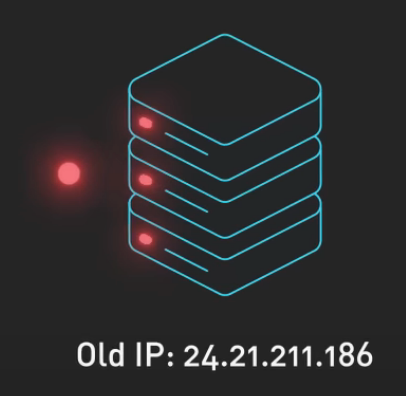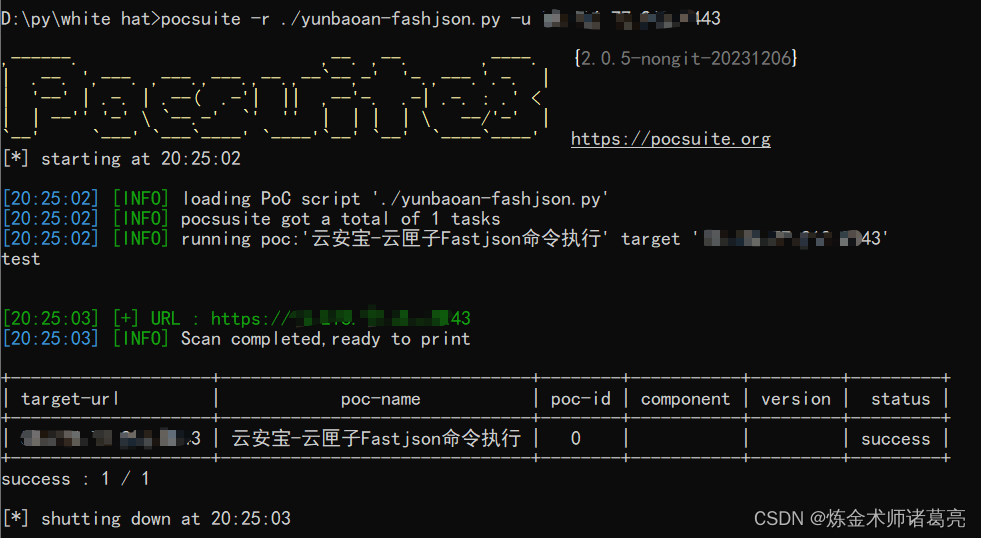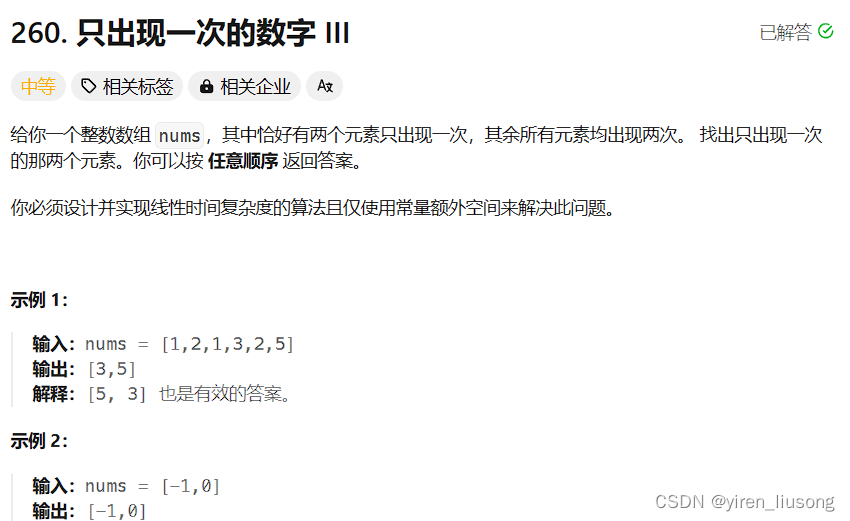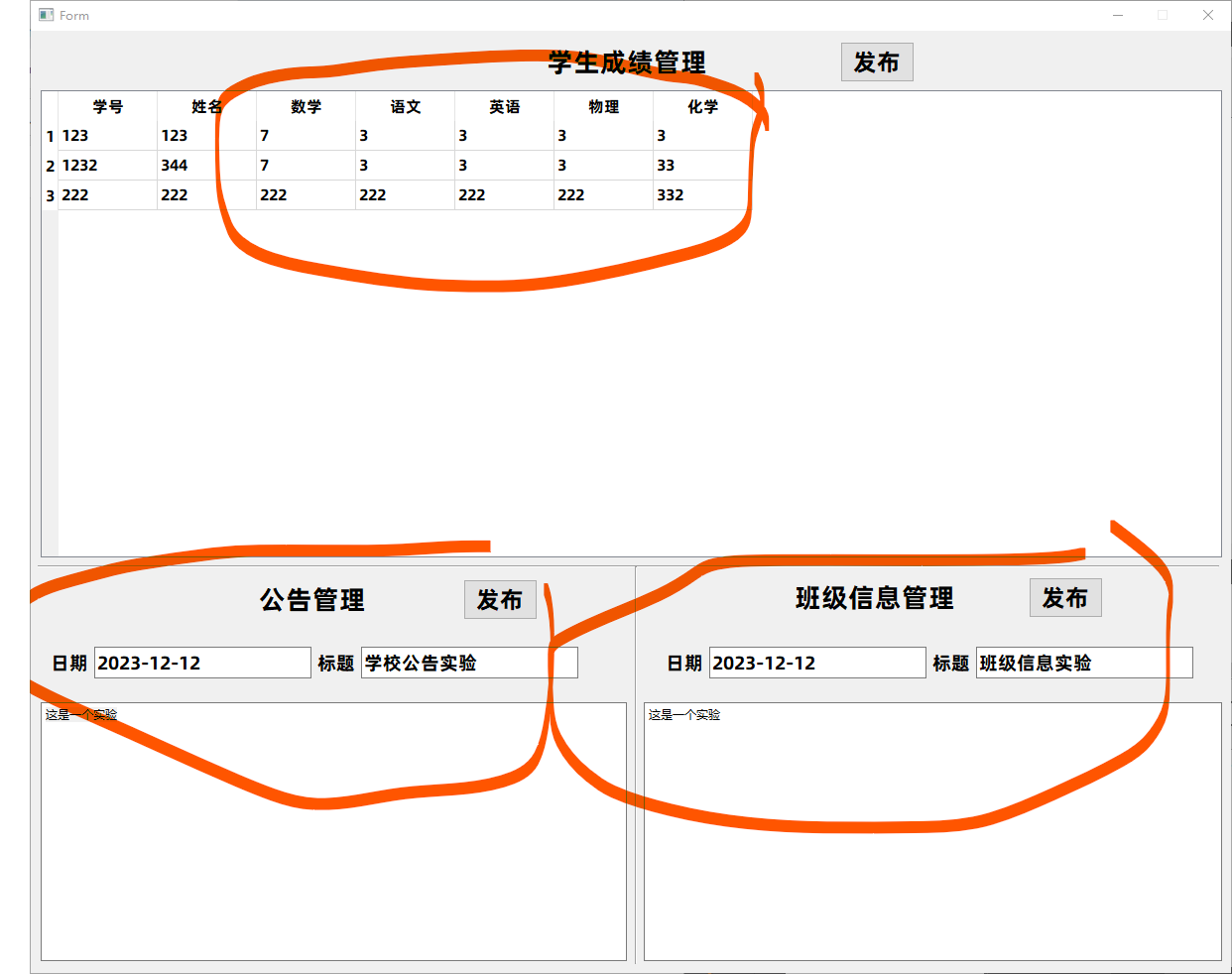本章主要介绍FFmpeg基础组件AVFrame.
文章目录
- 1.结构体成员
- 2.成员函数
- AVFrame Host内存的获取 av_frame_get_buffer
- AVFrame device内存获取av_hwframe_get_buffer()
1.结构体成员
我们把所有的代码先粘贴上来,在后边一个一个解释。
typedef struct AVFrame {
#define AV_NUM_DATA_POINTERS 8
/**
* pointer to the picture/channel planes.
* This might be different from the first allocated byte. For video,
* it could even point to the end of the image data.
*
* All pointers in data and extended_data must point into one of the
* AVBufferRef in buf or extended_buf.
*
* Some decoders access areas outside 0,0 - width,height, please
* see avcodec_align_dimensions2(). Some filters and swscale can read
* up to 16 bytes beyond the planes, if these filters are to be used,
* then 16 extra bytes must be allocated.
*
* NOTE: Pointers not needed by the format MUST be set to NULL.
*
* @attention In case of video, the data[] pointers can point to the
* end of image data in order to reverse line order, when used in
* combination with negative values in the linesize[] array.
*/
uint8_t *data[AV_NUM_DATA_POINTERS];
/**
* For video, a positive or negative value, which is typically indicating
* the size in bytes of each picture line, but it can also be:
* - the negative byte size of lines for vertical flipping
* (with data[n] pointing to the end of the data
* - a positive or negative multiple of the byte size as for accessing
* even and odd fields of a frame (possibly flipped)
*
* For audio, only linesize[0] may be set. For planar audio, each channel
* plane must be the same size.
*
* For video the linesizes should be multiples of the CPUs alignment
* preference, this is 16 or 32 for modern desktop CPUs.
* Some code requires such alignment other code can be slower without
* correct alignment, for yet other it makes no difference.
*
* @note The linesize may be larger than the size of usable data -- there
* may be extra padding present for performance reasons.
*
* @attention In case of video, line size values can be negative to achieve
* a vertically inverted iteration over image lines.
*/
int linesize[AV_NUM_DATA_POINTERS];
/**
* pointers to the data planes/channels.
*
* For video, this should simply point to data[].
*
* For planar audio, each channel has a separate data pointer, and
* linesize[0] contains the size of each channel buffer.
* For packed audio, there is just one data pointer, and linesize[0]
* contains the total size of the buffer for all channels.
*
* Note: Both data and extended_data should always be set in a valid frame,
* but for planar audio with more channels that can fit in data,
* extended_data must be used in order to access all channels.
*/
uint8_t **extended_data;
/**
* @name Video dimensions
* Video frames only. The coded dimensions (in pixels) of the video frame,
* i.e. the size of the rectangle that contains some well-defined values.
*
* @note The part of the frame intended for display/presentation is further
* restricted by the @ref cropping "Cropping rectangle".
* @{
*/
int width, height;
/**
* @}
*/
/**
* number of audio samples (per channel) described by this frame
*/
int nb_samples;
/**
* format of the frame, -1 if unknown or unset
* Values correspond to enum AVPixelFormat for video frames,
* enum AVSampleFormat for audio)
*/
int format;
/**
* 1 -> keyframe, 0-> not
*/
int key_frame;
/**
* Picture type of the frame.
*/
enum AVPictureType pict_type;
/**
* Sample aspect ratio for the video frame, 0/1 if unknown/unspecified.
*/
AVRational sample_aspect_ratio;
/**
* Presentation timestamp in time_base units (time when frame should be shown to user).
*/
int64_t pts;
/**
* DTS copied from the AVPacket that triggered returning this frame. (if frame threading isn't used)
* This is also the Presentation time of this AVFrame calculated from
* only AVPacket.dts values without pts values.
*/
int64_t pkt_dts;
/**
* Time base for the timestamps in this frame.
* In the future, this field may be set on frames output by decoders or
* filters, but its value will be by default ignored on input to encoders
* or filters.
*/
AVRational time_base;
/**
* picture number in bitstream order
*/
int coded_picture_number;
/**
* picture number in display order
*/
int display_picture_number;
/**
* quality (between 1 (good) and FF_LAMBDA_MAX (bad))
*/
int quality;
/**
* for some private data of the user
*/
void *opaque;
/**
* When decoding, this signals how much the picture must be delayed.
* extra_delay = repeat_pict / (2*fps)
*/
int repeat_pict;
/**
* The content of the picture is interlaced.
*/
int interlaced_frame;
/**
* If the content is interlaced, is top field displayed first.
*/
int top_field_first;
/**
* Tell user application that palette has changed from previous frame.
*/
int palette_has_changed;
/**
* reordered opaque 64 bits (generally an integer or a double precision float
* PTS but can be anything).
* The user sets AVCodecContext.reordered_opaque to represent the input at
* that time,
* the decoder reorders values as needed and sets AVFrame.reordered_opaque
* to exactly one of the values provided by the user through AVCodecContext.reordered_opaque
*/
int64_t reordered_opaque;
/**
* Sample rate of the audio data.
*/
int sample_rate;
/**
* Channel layout of the audio data.
*/
uint64_t channel_layout;
/**
* AVBuffer references backing the data for this frame. All the pointers in
* data and extended_data must point inside one of the buffers in buf or
* extended_buf. This array must be filled contiguously -- if buf[i] is
* non-NULL then buf[j] must also be non-NULL for all j < i.
*
* There may be at most one AVBuffer per data plane, so for video this array
* always contains all the references. For planar audio with more than
* AV_NUM_DATA_POINTERS channels, there may be more buffers than can fit in
* this array. Then the extra AVBufferRef pointers are stored in the
* extended_buf array.
*/
AVBufferRef *buf[AV_NUM_DATA_POINTERS];
/**
* For planar audio which requires more than AV_NUM_DATA_POINTERS
* AVBufferRef pointers, this array will hold all the references which
* cannot fit into AVFrame.buf.
*
* Note that this is different from AVFrame.extended_data, which always
* contains all the pointers. This array only contains the extra pointers,
* which cannot fit into AVFrame.buf.
*
* This array is always allocated using av_malloc() by whoever constructs
* the frame. It is freed in av_frame_unref().
*/
AVBufferRef **extended_buf;
/**
* Number of elements in extended_buf.
*/
int nb_extended_buf;
AVFrameSideData **side_data;
int nb_side_data;
/**
* @defgroup lavu_frame_flags AV_FRAME_FLAGS
* @ingroup lavu_frame
* Flags describing additional frame properties.
*
* @{
*/
/**
* The frame data may be corrupted, e.g. due to decoding errors.
*/
#define AV_FRAME_FLAG_CORRUPT (1 << 0)
/**
* A flag to mark the frames which need to be decoded, but shouldn't be output.
*/
#define AV_FRAME_FLAG_DISCARD (1 << 2)
/**
* @}
*/
/**
* Frame flags, a combination of @ref lavu_frame_flags
*/
int flags;
/**
* MPEG vs JPEG YUV range.
* - encoding: Set by user
* - decoding: Set by libavcodec
*/
enum AVColorRange color_range;
enum AVColorPrimaries color_primaries;
enum AVColorTransferCharacteristic color_trc;
/**
* YUV colorspace type.
* - encoding: Set by user
* - decoding: Set by libavcodec
*/
enum AVColorSpace colorspace;
enum AVChromaLocation chroma_location;
/**
* frame timestamp estimated using various heuristics, in stream time base
* - encoding: unused
* - decoding: set by libavcodec, read by user.
*/
int64_t best_effort_timestamp;
/**
* reordered pos from the last AVPacket that has been input into the decoder
* - encoding: unused
* - decoding: Read by user.
*/
int64_t pkt_pos;
/**
* duration of the corresponding packet, expressed in
* AVStream->time_base units, 0 if unknown.
* - encoding: unused
* - decoding: Read by user.
*/
int64_t pkt_duration;
/**
* metadata.
* - encoding: Set by user.
* - decoding: Set by libavcodec.
*/
AVDictionary *metadata;
/**
* decode error flags of the frame, set to a combination of
* FF_DECODE_ERROR_xxx flags if the decoder produced a frame, but there
* were errors during the decoding.
* - encoding: unused
* - decoding: set by libavcodec, read by user.
*/
int decode_error_flags;
#define FF_DECODE_ERROR_INVALID_BITSTREAM 1
#define FF_DECODE_ERROR_MISSING_REFERENCE 2
#define FF_DECODE_ERROR_CONCEALMENT_ACTIVE 4
#define FF_DECODE_ERROR_DECODE_SLICES 8
/**
* number of audio channels, only used for audio.
* - encoding: unused
* - decoding: Read by user.
*/
int channels;
/**
* size of the corresponding packet containing the compressed
* frame.
* It is set to a negative value if unknown.
* - encoding: unused
* - decoding: set by libavcodec, read by user.
*/
int pkt_size;
/**
* For hwaccel-format frames, this should be a reference to the
* AVHWFramesContext describing the frame.
*/
AVBufferRef *hw_frames_ctx;
/**
* AVBufferRef for free use by the API user. FFmpeg will never check the
* contents of the buffer ref. FFmpeg calls av_buffer_unref() on it when
* the frame is unreferenced. av_frame_copy_props() calls create a new
* reference with av_buffer_ref() for the target frame's opaque_ref field.
*
* This is unrelated to the opaque field, although it serves a similar
* purpose.
*/
AVBufferRef *opaque_ref;
/**
* @anchor cropping
* @name Cropping
* Video frames only. The number of pixels to discard from the the
* top/bottom/left/right border of the frame to obtain the sub-rectangle of
* the frame intended for presentation.
* @{
*/
size_t crop_top;
size_t crop_bottom;
size_t crop_left;
size_t crop_right;
/**
* @}
*/
/**
* AVBufferRef for internal use by a single libav* library.
* Must not be used to transfer data between libraries.
* Has to be NULL when ownership of the frame leaves the respective library.
*
* Code outside the FFmpeg libs should never check or change the contents of the buffer ref.
*
* FFmpeg calls av_buffer_unref() on it when the frame is unreferenced.
* av_frame_copy_props() calls create a new reference with av_buffer_ref()
* for the target frame's private_ref field.
*/
AVBufferRef *private_ref;
} AVFrame;
AVFrame中核心成员,我们常用的就是下面几个
typedef struct AVFrame {
...
uint8_t *data[AV_NUM_DATA_POINTERS]
int linesize[AV_NUM_DATA_POINTERS];
uint8_t **extended_data;uint8_t **extended_data;
int width, height;
int format;
int key_frame;
int64_t pts;
int64_t pkt_dts;
AVRational time_base;
AVBufferRef *buf[AV_NUM_DATA_POINTERS];
...
}
这个结构体主要保存解码后的YUV数据,特别注意的是AVBufferRef *buf[AV_NUM_DATA_POINTERS];这个成员,因为它用来进行分配内存的释放。
其实在很多地方用到了AVBufferRef ,原理就是其中内部使用了一个引用,当引用为1的时候,就把内部指向的memory释放掉。
/**
* A reference counted buffer type. It is opaque and is meant to be used through
* references (AVBufferRef).
*/
typedef struct AVBuffer AVBuffer;
/**
* A reference to a data buffer.
*
* The size of this struct is not a part of the public ABI and it is not meant
* to be allocated directly.
*/
typedef struct AVBufferRef {
AVBuffer *buffer;
/**
* The data buffer. It is considered writable if and only if
* this is the only reference to the buffer, in which case
* av_buffer_is_writable() returns 1.
*/
uint8_t *data;
/**
* Size of data in bytes.
*/
size_t size;
} AVBufferRef;
其中data就是yuv数据,size就是数据大小,我们看到里面的AVBuffer ,其详细结构如下,其中refcount就是引用数量,free就是释放函数
struct AVBuffer {
uint8_t *data; /**< data described by this buffer */
size_t size; /**< size of data in bytes */
/**
* number of existing AVBufferRef instances referring to this buffer
*/
atomic_uint refcount;
/**
* a callback for freeing the data
*/
void (*free)(void *opaque, uint8_t *data);
/**
* an opaque pointer, to be used by the freeing callback
*/
void *opaque;
/**
* A combination of AV_BUFFER_FLAG_*
*/
int flags;
/**
* A combination of BUFFER_FLAG_*
*/
int flags_internal;
};
关于这一块智能引用,其提供了一些函数族
/**
* Allocate an AVBuffer of the given size using av_malloc().
*
* @return an AVBufferRef of given size or NULL when out of memory
*/
AVBufferRef *av_buffer_alloc(size_t size);
/**
* Same as av_buffer_alloc(), except the returned buffer will be initialized
* to zero.
*/
AVBufferRef *av_buffer_allocz(size_t size);
/**
* Create an AVBuffer from an existing array.
*
* If this function is successful, data is owned by the AVBuffer. The caller may
* only access data through the returned AVBufferRef and references derived from
* it.
* If this function fails, data is left untouched.
* @param data data array
* @param size size of data in bytes
* @param free a callback for freeing this buffer's data
* @param opaque parameter to be got for processing or passed to free
* @param flags a combination of AV_BUFFER_FLAG_*
*
* @return an AVBufferRef referring to data on success, NULL on failure.
*/
AVBufferRef *av_buffer_create(uint8_t *data, size_t size,
void (*free)(void *opaque, uint8_t *data),
void *opaque, int flags);
/**
* Default free callback, which calls av_free() on the buffer data.
* This function is meant to be passed to av_buffer_create(), not called
* directly.
*/
void av_buffer_default_free(void *opaque, uint8_t *data);
/**
* Create a new reference to an AVBuffer.
*
* @return a new AVBufferRef referring to the same AVBuffer as buf or NULL on
* failure.
*/
AVBufferRef *av_buffer_ref(const AVBufferRef *buf);
/**
* Free a given reference and automatically free the buffer if there are no more
* references to it.
*
* @param buf the reference to be freed. The pointer is set to NULL on return.
*/
void av_buffer_unref(AVBufferRef **buf);
/**
* @return 1 if the caller may write to the data referred to by buf (which is
* true if and only if buf is the only reference to the underlying AVBuffer).
* Return 0 otherwise.
* A positive answer is valid until av_buffer_ref() is called on buf.
*/
int av_buffer_is_writable(const AVBufferRef *buf);
/**
* @return the opaque parameter set by av_buffer_create.
*/
void *av_buffer_get_opaque(const AVBufferRef *buf);
int av_buffer_get_ref_count(const AVBufferRef *buf);
这些函数族用户是用不到的,一般在ffmpeg内部模块中使用到。比如AVFrame函数族中。
其余根据字面意思很好理解。其中linesize表示每个plane的步长。
比如YUV420的数,其数据长度大小为:
if (frame->pixel_format == TOPSCODEC_PIX_FMT_I420 ||
frame->pixel_format == TOPSCODEC_PIX_FMT_NV12 ||
frame->pixel_format == TOPSCODEC_PIX_FMT_NV21 ||
frame->pixel_format == TOPSCODEC_PIX_FMT_P010 ||
frame->pixel_format == TOPSCODEC_PIX_FMT_P010LE) {
int Y = frame->linesize[0] * frame->height;
int U = frame->linesize[1] * ((frame->height + 1) / 2);
int V = frame->linesize[2] * ((frame->height + 1) / 2);
}
也就是说yuv数据的宽度是多大。
其实这个并不用手工来计算,ffmpeg框架提供了专用的函数来处理:
int av_image_fill_plane_sizes(size_t sizes[4], enum AVPixelFormat pix_fmt,
int height, const ptrdiff_t linesizes[4])
这个函数用来计算每个plane的长度是多少,通过传入参数我们很容易看到height.原理和我们上面一样。
下面这个函数比较特殊,可以计算linesizes,也就是每个通道的stride.
int av_image_fill_linesizes(int linesizes[4], enum AVPixelFormat pix_fmt, int width)
这个函数专门通过width和pix_fmt来计算linesizes[4],这样就不用我们通过手动来去计算了。
还有另外一个函数用来计算每个planes数据长度
该类函数族ffmpeg提供了很多,具体在imgutils.h中
/**
* Compute the size of an image line with format pix_fmt and width
* width for the plane plane.
*
* @return the computed size in bytes
*/
int av_image_get_linesize(enum AVPixelFormat pix_fmt, int width, int plane);
/**
* Fill plane linesizes for an image with pixel format pix_fmt and
* width width.
*
* @param linesizes array to be filled with the linesize for each plane
* @return >= 0 in case of success, a negative error code otherwise
*/
int av_image_fill_linesizes(int linesizes[4], enum AVPixelFormat pix_fmt, int width);
/**
* Fill plane sizes for an image with pixel format pix_fmt and height height.
*
* @param size the array to be filled with the size of each image plane
* @param linesizes the array containing the linesize for each
* plane, should be filled by av_image_fill_linesizes()
* @return >= 0 in case of success, a negative error code otherwise
*
* @note The linesize parameters have the type ptrdiff_t here, while they are
* int for av_image_fill_linesizes().
*/
int av_image_fill_plane_sizes(size_t size[4], enum AVPixelFormat pix_fmt,
int height, const ptrdiff_t linesizes[4]);
/**
* Fill plane data pointers for an image with pixel format pix_fmt and
* height height.
*
* @param data pointers array to be filled with the pointer for each image plane
* @param ptr the pointer to a buffer which will contain the image
* @param linesizes the array containing the linesize for each
* plane, should be filled by av_image_fill_linesizes()
* @return the size in bytes required for the image buffer, a negative
* error code in case of failure
*/
int av_image_fill_pointers(uint8_t *data[4], enum AVPixelFormat pix_fmt, int height,
uint8_t *ptr, const int linesizes[4]);
/**
* Allocate an image with size w and h and pixel format pix_fmt, and
* fill pointers and linesizes accordingly.
* The allocated image buffer has to be freed by using
* av_freep(&pointers[0]).
*
* @param align the value to use for buffer size alignment
* @return the size in bytes required for the image buffer, a negative
* error code in case of failure
*/
int av_image_alloc(uint8_t *pointers[4], int linesizes[4],
int w, int h, enum AVPixelFormat pix_fmt, int align);
/**
* Copy image plane from src to dst.
* That is, copy "height" number of lines of "bytewidth" bytes each.
* The first byte of each successive line is separated by *_linesize
* bytes.
*
* bytewidth must be contained by both absolute values of dst_linesize
* and src_linesize, otherwise the function behavior is undefined.
*
* @param dst_linesize linesize for the image plane in dst
* @param src_linesize linesize for the image plane in src
*/
void av_image_copy_plane(uint8_t *dst, int dst_linesize,
const uint8_t *src, int src_linesize,
int bytewidth, int height);
/**
* Copy image in src_data to dst_data.
*
* @param dst_linesizes linesizes for the image in dst_data
* @param src_linesizes linesizes for the image in src_data
*/
void av_image_copy(uint8_t *dst_data[4], int dst_linesizes[4],
const uint8_t *src_data[4], const int src_linesizes[4],
enum AVPixelFormat pix_fmt, int width, int height);
/**
* Setup the data pointers and linesizes based on the specified image
* parameters and the provided array.
*
* The fields of the given image are filled in by using the src
* address which points to the image data buffer. Depending on the
* specified pixel format, one or multiple image data pointers and
* line sizes will be set. If a planar format is specified, several
* pointers will be set pointing to the different picture planes and
* the line sizes of the different planes will be stored in the
* lines_sizes array. Call with src == NULL to get the required
* size for the src buffer.
*
* To allocate the buffer and fill in the dst_data and dst_linesize in
* one call, use av_image_alloc().
*
* @param dst_data data pointers to be filled in
* @param dst_linesize linesizes for the image in dst_data to be filled in
* @param src buffer which will contain or contains the actual image data, can be NULL
* @param pix_fmt the pixel format of the image
* @param width the width of the image in pixels
* @param height the height of the image in pixels
* @param align the value used in src for linesize alignment
* @return the size in bytes required for src, a negative error code
* in case of failure
*/
int av_image_fill_arrays(uint8_t *dst_data[4], int dst_linesize[4],
const uint8_t *src,
enum AVPixelFormat pix_fmt, int width, int height, int align);
/**
* Return the size in bytes of the amount of data required to store an
* image with the given parameters.
*
* @param pix_fmt the pixel format of the image
* @param width the width of the image in pixels
* @param height the height of the image in pixels
* @param align the assumed linesize alignment
* @return the buffer size in bytes, a negative error code in case of failure
*/
int av_image_get_buffer_size(enum AVPixelFormat pix_fmt, int width, int height, int align);
/**
* Copy image data from an image into a buffer.
*
* av_image_get_buffer_size() can be used to compute the required size
* for the buffer to fill.
*
* @param dst a buffer into which picture data will be copied
* @param dst_size the size in bytes of dst
* @param src_data pointers containing the source image data
* @param src_linesize linesizes for the image in src_data
* @param pix_fmt the pixel format of the source image
* @param width the width of the source image in pixels
* @param height the height of the source image in pixels
* @param align the assumed linesize alignment for dst
* @return the number of bytes written to dst, or a negative value
* (error code) on error
*/
int av_image_copy_to_buffer(uint8_t *dst, int dst_size,
const uint8_t * const src_data[4], const int src_linesize[4],
enum AVPixelFormat pix_fmt, int width, int height, int align);
/**
* Check if the given dimension of an image is valid, meaning that all
* bytes of the image can be addressed with a signed int.
*
* @param w the width of the picture
* @param h the height of the picture
* @param log_offset the offset to sum to the log level for logging with log_ctx
* @param log_ctx the parent logging context, it may be NULL
* @return >= 0 if valid, a negative error code otherwise
*/
int av_image_check_size(unsigned int w, unsigned int h, int log_offset, void *log_ctx);
/**
* Check if the given dimension of an image is valid, meaning that all
* bytes of a plane of an image with the specified pix_fmt can be addressed
* with a signed int.
*
* @param w the width of the picture
* @param h the height of the picture
* @param max_pixels the maximum number of pixels the user wants to accept
* @param pix_fmt the pixel format, can be AV_PIX_FMT_NONE if unknown.
* @param log_offset the offset to sum to the log level for logging with log_ctx
* @param log_ctx the parent logging context, it may be NULL
* @return >= 0 if valid, a negative error code otherwise
*/
int av_image_check_size2(unsigned int w, unsigned int h, int64_t max_pixels, enum AVPixelFormat pix_fmt, int log_offset, void *log_ctx);
2.成员函数
const char *av_get_colorspace_name(enum AVColorSpace val);
AVFrame *av_frame_alloc(void);
void av_frame_free(AVFrame **frame);
int av_frame_ref(AVFrame *dst, const AVFrame *src);
AVFrame *av_frame_clone(const AVFrame *src);
void av_frame_move_ref(AVFrame *dst, AVFrame *src);
int av_frame_get_buffer(AVFrame *frame, int align);
int av_frame_is_writable(AVFrame *frame);
int av_frame_make_writable(AVFrame *frame);
int av_frame_copy(AVFrame *dst, const AVFrame *src);
int av_frame_copy_props(AVFrame *dst, const AVFrame *src);
AVFrameSideData *av_frame_new_side_data(AVFrame *frame,
enum AVFrameSideDataType type,
size_t size);
AVFrameSideData *av_frame_new_side_data_from_buf(AVFrame *frame,
enum AVFrameSideDataType type,
AVBufferRef *buf);
void av_frame_remove_side_data(AVFrame *frame, enum AVFrameSideDataType type);
const char *av_frame_side_data_name(enum AVFrameSideDataType type);
上面函数核心就是操作AVFrame。
AVFrame Host内存的获取 av_frame_get_buffer
ffmpeg提供了一个比较特殊的接口
/**
* Allocate new buffer(s) for audio or video data.
*
* The following fields must be set on frame before calling this function:
* - format (pixel format for video, sample format for audio)
* - width and height for video
* - nb_samples and channel_layout for audio
*
* This function will fill AVFrame.data and AVFrame.buf arrays and, if
* necessary, allocate and fill AVFrame.extended_data and AVFrame.extended_buf.
* For planar formats, one buffer will be allocated for each plane.
*
* @warning: if frame already has been allocated, calling this function will
* leak memory. In addition, undefined behavior can occur in certain
* cases.
*
* @param frame frame in which to store the new buffers.
* @param align Required buffer size alignment. If equal to 0, alignment will be
* chosen automatically for the current CPU. It is highly
* recommended to pass 0 here unless you know what you are doing.
*
* @return 0 on success, a negative AVERROR on error.
*/
int av_frame_get_buffer(AVFrame *frame, int align)
这个函数是用来从ffmpeg内存池中为frame中获取buf,从上面的注释可以看到,如果想要获取buf,必须要设置
/*
* The following fields must be set on frame before calling this function:
* - format (pixel format for video, sample format for audio)
* - width and height for video
* - nb_samples and channel_layout for audio
* /
查看详细的函数代码:
int av_frame_get_buffer(AVFrame *frame, int align)
{
if (frame->format < 0)
return AVERROR(EINVAL);
if (frame->width > 0 && frame->height > 0)
return get_video_buffer(frame, align);
else if (frame->nb_samples > 0 && (frame->channel_layout || frame->channels > 0))
return get_audio_buffer(frame, align);
return AVERROR(EINVAL);
}
详细的调用流程如下:
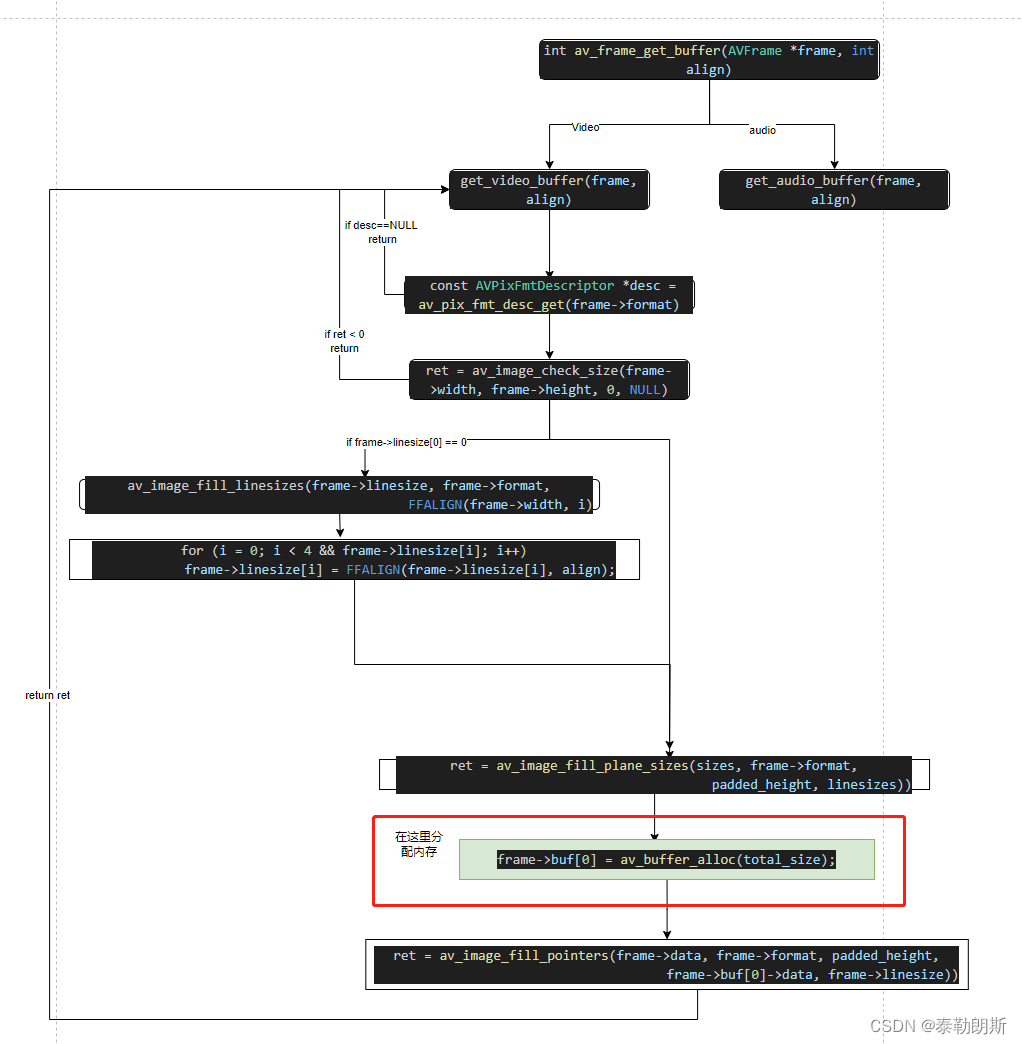
AVFrame device内存获取av_hwframe_get_buffer()
既然有host的内存获取,那么就有device内存的获取
/**
* Allocate a new frame attached to the given AVHWFramesContext.
*
* @param hwframe_ctx a reference to an AVHWFramesContext
* @param frame an empty (freshly allocated or unreffed) frame to be filled with
* newly allocated buffers.
* @param flags currently unused, should be set to zero
* @return 0 on success, a negative AVERROR code on failure
*/
int av_hwframe_get_buffer(AVBufferRef *hwframe_ctx, AVFrame *frame, int flags);
其调用流程如下,注意分支代码,这里是继承了父类后,通过mmap去map到父类的内存上去。
